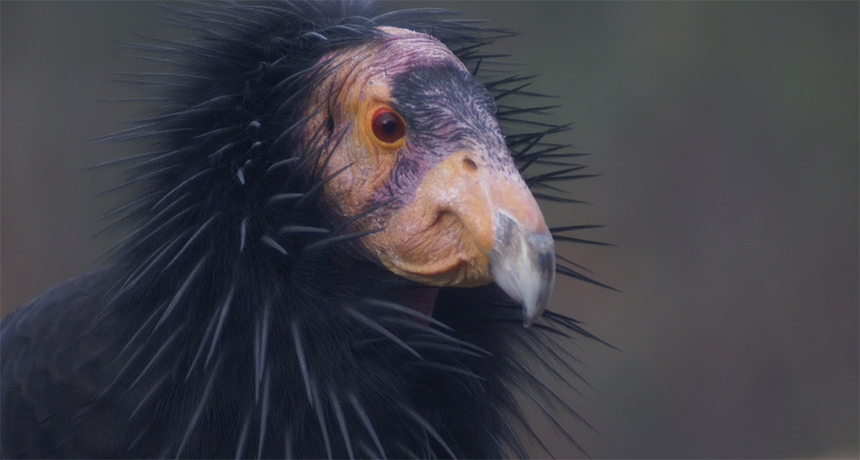Bad news for big bird
Lead poisoning, which nearly killed off California condors, still threatens the birds

Humans have tried to save the California condor, but a new study reveals that lead poisoning remains a threat to the endangered species.
SUSAN HAIG, U.S. GEOLOGICAL SURVEY
Thirty years ago, the California condor came dangerously close to extinction. Biologists took action, and their efforts worked. The big, bald birds lived, and their numbers grew — from 22 in 1982 to several hundred today.
But the bird’s apparent success story may be misleading, a new study finds. By studying blood and feathers from condors in the wild, researchers have confirmed that the birds are suffering a slow poisoning.
It’s not surprising. Lead poisoning nearly wiped the big bird out in the first place. Because the threat continues, this all-American bird still can’t survive in the wild without human help. In April 1987, for instance, U.S. biologists captured the last wild California condors and placed them in captivity, where they could dine on healthy food and raise their babies in safety. Scientists gradually released some of those younger birds into the wild. But there they are confronting the same lead poisoning that killed off most of their parents’ generation.
Condors dine on carrion, which is the flesh of dead animals. Many of those dead animals died from gunshot wounds. And the ammunition that inflicted the wounds contains another, slower killer — lead.
It doesn’t take much lead to cause a problem. Even if the toxic substance is found in only 1 out of every 200 animal carcasses, a condor is still likely to eat lead in a 10-year period, scientists from California and Colorado estimate in the new study. Since condors may live 60 or 70 years, they have a long time to accumulate a lot of lead.
Arizona and California, two states where the condors live, have passed laws to cut down on lead ammunition. But the laws haven’t helped the birds, biologist Jeff Walters told Science News. Walters, of Virginia Tech in Blacksburg, worked on an earlier report about condors but was not involved with the new study.
Unless the entire country can put a stop to lead ammunition, he said, the condors can “exist in the wild only due to costly, extensive human intervention.”
Walters told Science News that the lead used in ammunition probably has negative impacts on humans as well as condors, and he predicts that one day it will be banned.
“There is no doubt in my mind that use of lead ammunition is resulting in exposure of human children to harmful effects of lead,” he said. “We just haven’t documented the extent of this or its impact yet.”
Power words
lead A heavy, bluish-gray, soft metal. It has been used in roofing, plumbing, ammunition, storage batteries, radiation shields, etc. Chemical compounds made from it have been used in crystal glass, gasoline and many older house paints.
ammunition Objects, such as bullets, fired from a gun.
condor A large, New World vulture with a bare head and mainly black plumage, living in mountainous regions where it spends much time soaring.
carcass The dead body of an animal.







